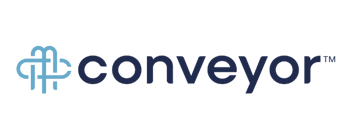Consumers expect more evidence of success from their potential financial services partners. To stand out, your business needs to have a competitive edge by utilizing tactics outside of a well-intentioned sales pitch or brand awareness campaign.
That’s where adding thought leadership to your financial services marketing strategy comes in.
A compelling thought leadership strategy isn’t just good for financial services marketing — it’s the key to earning trust and connecting with your future clients, given:
- The complexity of the industry, as firms need to have proven expertise to navigate regulations, technology and economic trends. Sharing knowledge reassures clients of your firm's competency.
- The high-stakes nature of the decisions you make in your work, given that you are managing a client’s financial portfolio. A unique point of view communicated by your thought leadership strategy instills confidence in your solutions.
- The relationship-driven nature of the work, making trust critical. Consistent thought leadership strengthens brand reputation and fosters loyalty.
- The rapidly evolving trends in both the financial services field. Offering insights on AI, blockchain, ESG and embedded finance positions the firm as forward-thinking.
But what do you need to include to actually be successful when crafting your thought leadership strategy?
In this blog, we’ll talk you through the steps for building your thought leadership strategy, what features it needs to have to meet customers' needs and how a financial services marketing agency can help.

Solving for Challenges in Financial Services Marketing
When creating a thought leadership strategy, it’s important to highlight the challenges your clients face along with the possible solutions that already exist within your firm. Here are just a few ideas that could become the theme for your next thought leadership campaign.
Evolving Customer Expectations
As more and more of our lives shift online, customers are expecting a similar experience to that of the consumer sector when it comes to their financial processes. Clients are expecting seamless, real-time and personalized services that allow them to get the answers and information they need without having to track someone down.
This looks like:
- What are some digital self-service platforms where they can manage accounts, initiate transactions and get support without interaction with a human?
- How can financial products and services be personalized to meet their specific needs rather than a one-size-fits-most solution?
- Can clients access real-time transaction processing and updates so they know exactly where their money is at any given moment?
Modernizing a Legacy System
Using outdated systems hinders growth and prevents integration with modern technologies. Modernization, thus, becomes crucial for maintaining a competitive advantage in the financial services industry and goes hand-in-hand with meeting the evolving needs of your customers.
They want modern systems and infrastructure to streamline operations, reduce costs and improve service. On top of that, these systems should be compatible with new technologies without being costly or complex.
Provide answers to questions like:
- What are the primary challenges clients face with their legacy systems?
- What innovations or best practices do we have to help them?
- Which metrics or results are needed to validate modernization?
- How do you combat the potential risks and concerns associated with modernization?
Utilizing Data and Analytics
With so much data generated daily, effectively harnessing it to make informed decisions, manage risk and personalize customer experiences is essential. Not only does it show the value behind your work, but it also gives clients more confidence and understanding about how their portfolio is being shaped.
You should aim to answer questions like:
- How do we use predictive analytics to forecast market trends, customer behavior and potential risks?
- What real-time data do we check to identify and prevent fraud?
- How do we analyze information about your clients to tailor services to their specific needs?
Creating a Global Approach
As the financial world continues to extend its global reach, there’s a growing need for efficient cross-border solutions. Clients need a partner who can handle multiple currencies, regulatory environments and payment systems – all while ensuring reliable and fast payment processing.
Can you provide answers to questions like:
- How to effectively manage foreign exchange risks and provide competitive rates?
- How to navigate diverse and complex regulatory landscapes across different countries?
- How to ensure a reliable and fast payment infrastructure to prevent any delays?
What to Include in a Thought Leadership Strategy
Now that you have some ideas of what themes to tackle in your thought leadership strategy, the next step is figuring out what you want to include. To ensure you’re meeting people wherever they are, it’s best to create a mix of both digital and in-person opportunities for people to read your insights. While this may seem daunting, the good news is that all efforts can be used together to support your work.
High-Value Content
After gathering the initial data from your strategic research partner, you’ll want to produce high-value content that summarizes these findings and provides tangible solutions for solving them. This initial content should be gated, meaning people must complete a form to access it, and supported by interlinked ungated content for maximum reach. This helps you then create a list of potential leads to start nurturing.
This could include a mix of different mediums, like:
- White papers and reports that provide broad insight into the trends and challenges and the different solutions available.
- Case studies that showcase a personalized approach to a client’s problem, with both the data of the report and the actual ROI for that account.
- Newsletters that provide regular insights and updates tailored to a potential client’s needs.
- LinkedIn articles and blogs that include thought-provoking content and actionable next steps.
- Explainer videos, webinars or podcast episodes that bring in both internal and external experts to continue the conversation.
Social Proof and Engagement
Given the complex compliance structure of the industry, be sure to anonymize stories wherever possible and check to see what guidance exists around using direct quotes from clients (even if their name is not included).
Highlighting industry awards, certifications or accolades for the entire firm or individual advisors can also underscore your team’s expertise. This includes press mentions or collaborations with respected institutions.
Creating opportunities for potential clients to hear about or discuss challenges with your advisors can also go a long way toward fostering deeper relationships. One method with a low barrier to entry is social media. Advisors can post thought-provoking questions or polls to spark discussions, respond directly to comments or feedback, or share high-level solutions in LinkedIn groups or on Reddit.
In-person or virtual events allow prospects to engage with your team in real time for a more personalized experience while creating an opportunity to capture videos that can be used in the future as a lead generation tool. For example, you could host a LinkedIn Live about questions to ask when considering international investments that could be recorded and then shared as a gated resource on your website.
Executive Presence Online and IRL
Like the previous tactic, this method uses online and in-person opportunities for your firm’s executives in conjunction with respected figures or groups in your industry. Their endorsement enforces your credibility and expands your audience. Methods include in-person speaking events, media contributions (including co-authored articles and op-eds), webinars and podcasts. While this can be done with just your strategic media partner, you should also look at including other experts (think: clients, partner companies, vendors) in the conversation to both share additional insights from other perspectives and broaden the exposure of the event.
Executives will need to make sure they’re focusing on delivering actionable insights and ideas rather than simply promoting the firm. Referencing your high-value content and/or social proof is an easy way to do so.
Finding the Right Thought Leadership Partner
Not all thought leadership strategies are done alone. Sometimes, you may want to collaborate with a third-party industry analyst or media partner. The right analyst or trade publication will lend credibility to the work by bringing in an unbiased, expert opinion, it helps you gain more insights in these niche areas and it can put you in front of their audiences (which could help a future client find you).
When looking for a strategic partner, ask yourself the following questions to ensure you’re choosing the right one:
- Do they align with our brand values and mission?
- What resources and expertise would they bring to this partnership?
- What’s their track record in the industry?
- How do they measure and report success?
- Is their approach flexible and collaborative?
- Will you gain access to their audience through this partnership?
From there, you can work together to figure out what industry challenges you want to dive into and help address.
How to Measure Thought Leadership Success
So, how do you know if your campaigns are benefiting your firm? Like any other tactic, data will be key to evaluating your work to see what’s going well and what might need to be revisited. From the start, set goals that you want to achieve within a certain time frame. For example, you could aim to garner six qualified leads from your thought leadership work within a year of launching the campaign.
If this is your first time trying this tactic, be conservative with your goals. Remember, it often takes a few months to get enough data to make informed decisions, so don’t worry if you don’t see a huge jump in any of these metrics within the first few weeks.
Some of the metrics you can track are:
- Content performance, such as downloads, views or time spent on white papers, blogs or videos.
- Lead generation inquiries or demo requests that come from thought leadership content.
- Improved brand perception as measured via surveys or analyst reports assessing authority in key areas.
- Increased invitations to participate in webinars, conferences and podcasts.
Work with Thought Leadership Experts
Simply put, a thought leadership plan is meant to boost awareness of your firm, attract prospects and turn them into devoted customers without feeling like a sales pitch. By partnering with third-party industry analysts or trade publications, you can create a non-biased report that helps establish your credibility as an expert in the industry without tying to a sales pitch.
At Conveyor Marketing Group, we understand that while this may be a priority, there can be bandwidth and time management limits that prevent you from tackling this when you’d like. The right financial services marketing agency helps you build your thought leadership strategy and attract the right customers. Contact us today to learn more about how we can help your team.




